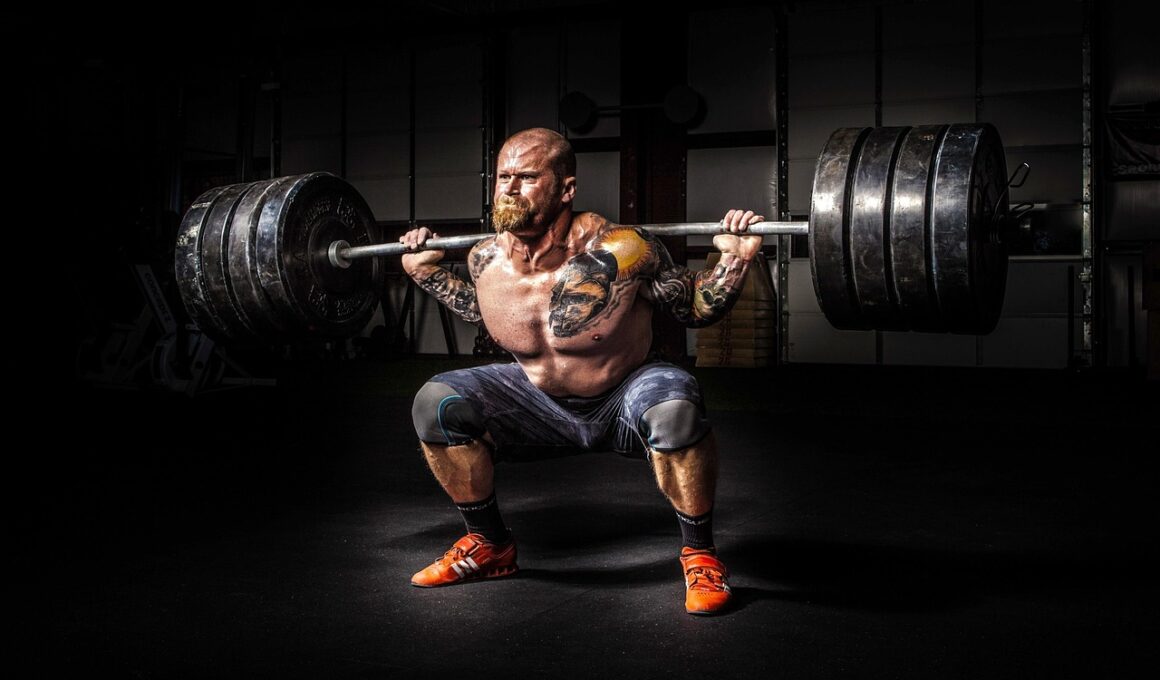DIY vs Commercial Wrist Wraps: What You Need to Know
Wrist wraps are essential for weightlifters, providing crucial support during heavy lifts. While many prefer commercial wrist wraps available on the market, DIY options offer versatility and customization. Each method has its own set of benefits and drawbacks, impacting performance during workouts. When opting for commercial wraps, materials and construction are vital factors to consider. Typically, these wraps are made from durable materials like cotton, elastic, or a blend that can withstand significant tension. Proper use of these wraps can help enhance lifters’ stability, allowing for greater lifting safety. Conversely, DIY wrist wraps might entail crafting one’s own using fabric and Velcro. This provides an opportunity for personal customization in terms of length and tightness. However, it requires higher caution as improper materials can lead to inadequate wrist support. For beginners, selecting the right wrist wrap—commercial or DIY—significantly influences performance. Analyzing personal lifting styles can also guide decision-making, as different techniques require varying levels of wrist support. Choose wisely to ensure maximum support and injury prevention.
This article delves into the top attributes to consider when comparing DIY and commercial wrist wraps. One essential factor is cost, as DIY wrist wraps can be far cheaper than commercial options. Crafting your own requires financial investment in materials but can save money in the long term. On the other hand, commercial wraps may carry higher upfront costs but provide guarantees of quality and durability. Additionally, the time investment for DIY wraps is considerable. For those who do not possess crafting capabilities, commercial wraps deliver immediate availability. Another vital attribute is functionality, focusing on the support offered during different techniques. Some commercial wraps come with ranges of flexibility and strengths, assisting athletes in choosing according to their needs. The fabric and design of the wrap also impact performance by allowing lifters to maintain proper form. Furthermore, assessing user reviews can be crucial in determining the best option for your needs. Personal experiences can provide crucial insights into the effectiveness of specific models or DIY methods. Ultimately, both types offer unique advantages essential for effective weightlifting.
Benefits of Commercial Wrist Wraps
Commercial wrist wraps provide various benefits that cater specifically to weightlifters. First, the quality of materials used in well-known brands ensures exceptional durability under stress. Unlike homemade alternatives, commercial wraps often feature reinforced stitching and sturdy closures. Such construction minimizes the risk of wear and tear, allowing for long-term use. Moreover, these wraps are typically designed by experts who understand biomechanics, ensuring optimal support during lifts. Standard sizes and designs contribute to ease of use, allowing for quick adjustments. Users can also choose wraps with additional features, such as thumb loops or customizable lengths, enhancing user comfort. Comfort is paramount, especially when lifting heavy weights to avoid distractions. The variety of patterns and colors in commercial options enables lifters to express their personalities. Another significant advantage is the ability to return or exchange poorly fitting wraps, which is not as feasible with DIY options. Such policies enhance buyer confidence. In conclusion, commercial wraps are ideal for those seeking reliability, comfort, and performance-enhancing features in their lifting gear.
While commercial wrist wraps stand out, DIY alternatives are not without their unique benefits. For starters, crafting your own wraps grants an unmatched level of personalization that commercial brands may lack. Lifters can select the fabric’s color, texture, and even custom shapes to complement their gripping style. This personal touch can be vital for those transporting their gear regularly. Moreover, DIY wrist wraps can be tailored specifically to user needs, offering modifications in length or elasticity that may not be available commercially. Additionally, the process of creating wraps can be rewarding, engaging users in a hands-on approach to their fitness journey. Another appealing aspect of DIY options is the potential to incorporate materials that cater to personal sensitivities or preferences. For instance, individuals with skin allergies can choose hypoallergenic or organic fabrics, which isn’t often found in brand offerings. However, achieving the perfect design or functionality takes time and practice. Moreover, beginner lifters might find the learning curve steep when it comes to selecting materials. In this context, understanding one’s own lifting needs is crucial for achieving the best results.
Considerations for Choosing Between Options
When choosing between commercial and DIY wrist wraps, several factors merit consideration. Durability represents one of the primary factors, particularly for serious lifters requiring consistent support. Commercial options typically rate higher in this regard because of their construction quality. Lifters needing wraps for heavy weightlifting should prioritize durability over cost. For novice lifters, affordability also plays a significant role; hence, DIY may seem attractive initially. However, it’s essential to gauge performance expectations before concluding. While DIY options offer unique customization, lacking knowledge about proper support can lead to accidents or injuries. Comfort remains another crucial consideration; ill-fitting wrist wraps can distract during intense workouts, leading to improper form and potential injuries. Additionally, it’s worth looking at reviews from other users who have tried both options. Personal testimonies can reveal benefits or flaws not immediately visible during the purchasing process. Ultimately, weighing these considerations against personal preferences can guide a more informed decision. Analyzing both solutions based on reasons for using wrist wraps can significantly influence effective training outcomes.
In tandem with considering wrist wraps, it’s essential to pay attention to compatible techniques. Depending on whether you’re doing Olympic lifts or powerlifting, the type of support required can vary. Heavy overhead lifts typically necessitate a snug fit, as fabric tension can significantly impact performance. Similarly, for other techniques such as bench press or deadlift, the wrap type can change based on the desired range of motion. This specialized support can guide together with wrist stability that promotes joint safety. It’s worth mentioning that the choice of material also directly affects the level of support offered. For instance, elastic blends allow for more wrist mobility, useful in dynamic lifts, while stiffer options provide enhanced rigidity for static lifts. This tailored choice ensures maximum joint protection. Moreover, understanding the interaction between wraps and overall lifting form can prevent compounding injuries. As techniques improve, being diligent about adapting wrist supports can promote both safety and performance. Regularly evaluating performance and support needs is essential, especially as an individual progresses in their lifting journey.
Conclusion: Making the Right Choice
In conclusion, choosing between DIY and commercial wrist wraps depends on various personal factors that need evaluation. Balancing quality, comfort, and support can significantly impact overall lifting performance, particularly during heavy sessions. For many serious lifters, investing in high-quality commercial options represents a wise choice due to their durability and performance-enhancing features. However, for casual lifters or those who enjoy personal crafting, DIY alternatives offer unique personalization opportunities. Ultimately, the best wrist wraps will depend on individual lifting styles and preferences. As with all lifting equipment, regularly assessing performance and needs can ensure the selected wraps continue to support growth and safety. Making an informed decision involves understanding the benefits and drawbacks of both options. By evaluating personal goals alongside these aspects, lifters can forge paths towards achieving their aspirations effectively. Choosing wrist wraps tailored to individual needs can make all the difference, allowing weightlifting enthusiasts to maintain their focus on improving strength without compromising joint safety. Ultimately, every lifter should explore available options to discover which wrist support meets their unique drive for progress.
In the journey of weightlifting, wrist wraps serve an indispensable role, aiding athletes in achieving their strength goals while protecting vital joints. By understanding the differing benefits associated with both DIY and commercial wrist wraps, lifters can make informed decisions that enhance their training experience while promoting injury-free lifting. Whether one prefers creating custom solutions or finding reliable commercial options, the key lies in aligning choice with personal needs and preferences.


